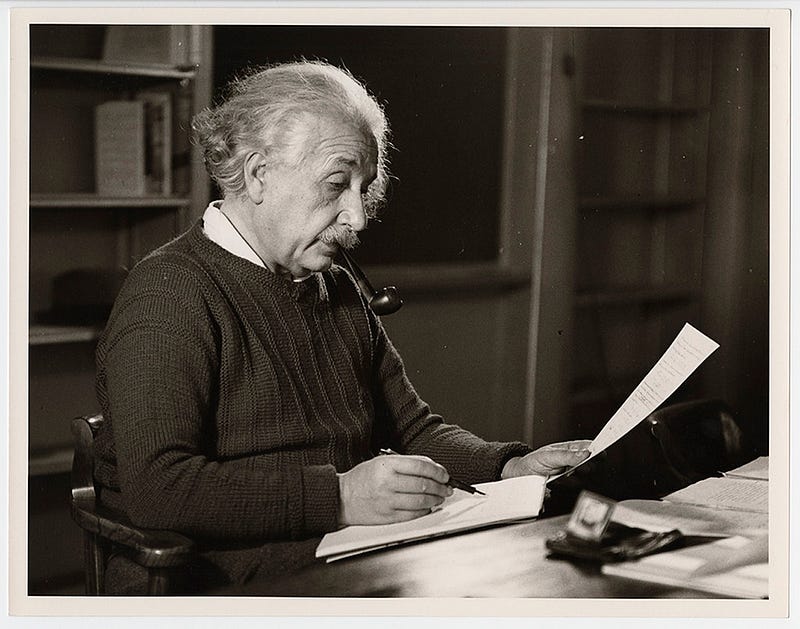The Harmonious Coexistence of Science and Religion
Written on
Chapter 1: Historical Context of Science and Religion
For centuries, there has been a debate about the compatibility of science and religion. It is not only feasible but essential for a comprehensive understanding of the universe that these two fields coexist peacefully. This article delves into the ways in which science and religion complement each other, their historical interplay, and the benefits of their unity.
Historical Perspectives on Science and Religion
In ancient cultures, the lines between science and religion were often blurred. Early scientific explorations were intertwined with religious practices, as humanity sought to understand both the natural and divine realms. For instance, ancient Egyptian and Mesopotamian astronomy was deeply rooted in religious beliefs, with priests often taking on roles as astronomers and astrologers. Similarly, ancient Greek thinkers like Aristotle and Pythagoras examined scientific concepts through the lens of their spiritual beliefs.
During the Medieval Ages, the Christian church played a pivotal role in advancing science and education. However, with the onset of the Scientific Revolution and the Enlightenment, a shift occurred. Some scholars began to advocate for a separation between science and religion, particularly when new scientific discoveries challenged established religious doctrines.
Section 1.1: The NOMA Principle
In 1997, evolutionary biologist Stephen Jay Gould introduced the Non-Overlapping Magisteria (NOMA) principle, which aimed to reconcile the perceived conflict between science and religion by defining their respective domains of authority. According to this concept, science and religion operate within distinct "magisteriums" that do not interfere with one another, allowing for harmonious coexistence.
Science concentrates on formulating testable hypotheses, gathering empirical evidence, and conducting experiments to understand the natural world. It seeks to elucidate the mechanisms that govern observable phenomena. Consequently, the focus of science lies in answering "how" questions about the universe's physical, chemical, and biological components.
Conversely, religion addresses questions of meaning, purpose, and ethics, tackling philosophical inquiries like "Why do we exist?" and "What is the nature of the divine?"—questions that science cannot answer. Religious beliefs and teachings aim to provide guidance on moral conduct, spiritual growth, and the development of a connection with a higher purpose or power.
The NOMA principle suggests that if the boundaries of each domain are clearly established, conflicts can be avoided, enabling science and religion to coexist harmoniously. While science offers insights into the natural world, religion provides understanding of metaphysical aspects of existence. Thus, both can operate within their respective spheres without encroaching on each other's domain.
Section 1.2: Notable Scientists Who Embrace Faith

Albert Einstein famously stated, "Science without religion is lame; religion without science is blind." As one of history's most eminent scientists, Einstein had a profound appreciation for the mysteries of the universe. Although he wasn't conventionally religious, he held a pantheistic worldview that revered the cosmos and its governing laws. His perspective illustrates how scientific inquiry can be intertwined with spiritual wonder.
Another prominent figure is Francis Collins, a respected geneticist who led the Human Genome Project. A devoted Christian, Collins has openly discussed how his faith informs his scientific pursuits. In his book "The Language of God: A Scientist Presents Evidence for Belief," he argues for the compatibility of science and faith, suggesting that they can be reconciled through the concept of BioLogos. He coined this term to express the belief that existence and the universe arise from both evolutionary processes and divine intention.
Chapter 2: The Ethical Role of Religion in Science
The first video, "Religion Vs Science: Can The Two Coexist? | Neil deGrasse Tyson," explores the intricate relationship between science and religion, discussing how they can potentially coexist and the challenges they face.
The second video, "Can Science and Religion Coexist?," further examines the dialogue between these two domains and their impact on our understanding of existence.
Victor J. Stenger, a physics professor emeritus at the University of Hawaii, famously remarked that "science and religion go together like oil and water." He argued that while they may coexist, they cannot merge into a single cohesive entity. The two fields fundamentally differ in their approaches to understanding the world; science relies on observation and logical reasoning, while religion posits that there are higher truths that cannot be accessed through empirical means. The effectiveness of the scientific method serves as evidence, while the failures of religious explanations challenge its validity.
The Role of Religion in Shaping Ethical Science
Religion plays a critical role in establishing ethical standards within the scientific community. Many religious traditions emphasize moral values that resonate across various scientific disciplines, such as compassion, empathy, and respect for life. These principles help scientists consider the ethical ramifications of their research, ensuring that scientific advancements align with the betterment of society and uphold human dignity.
By providing a framework to address complex ethical dilemmas, religion assists researchers in weighing the potential benefits and drawbacks of groundbreaking studies. Engaging with religious perspectives allows scientists to better understand the moral implications of their work, promoting responsible scientific exploration that prioritizes the well-being of humanity and the environment.
Recognizing the unique contributions of both science and religion can foster a more informed and ethical society, embracing the best of both realms. The coexistence of religion and science is not only feasible but also essential for a balanced and comprehensive understanding of life.